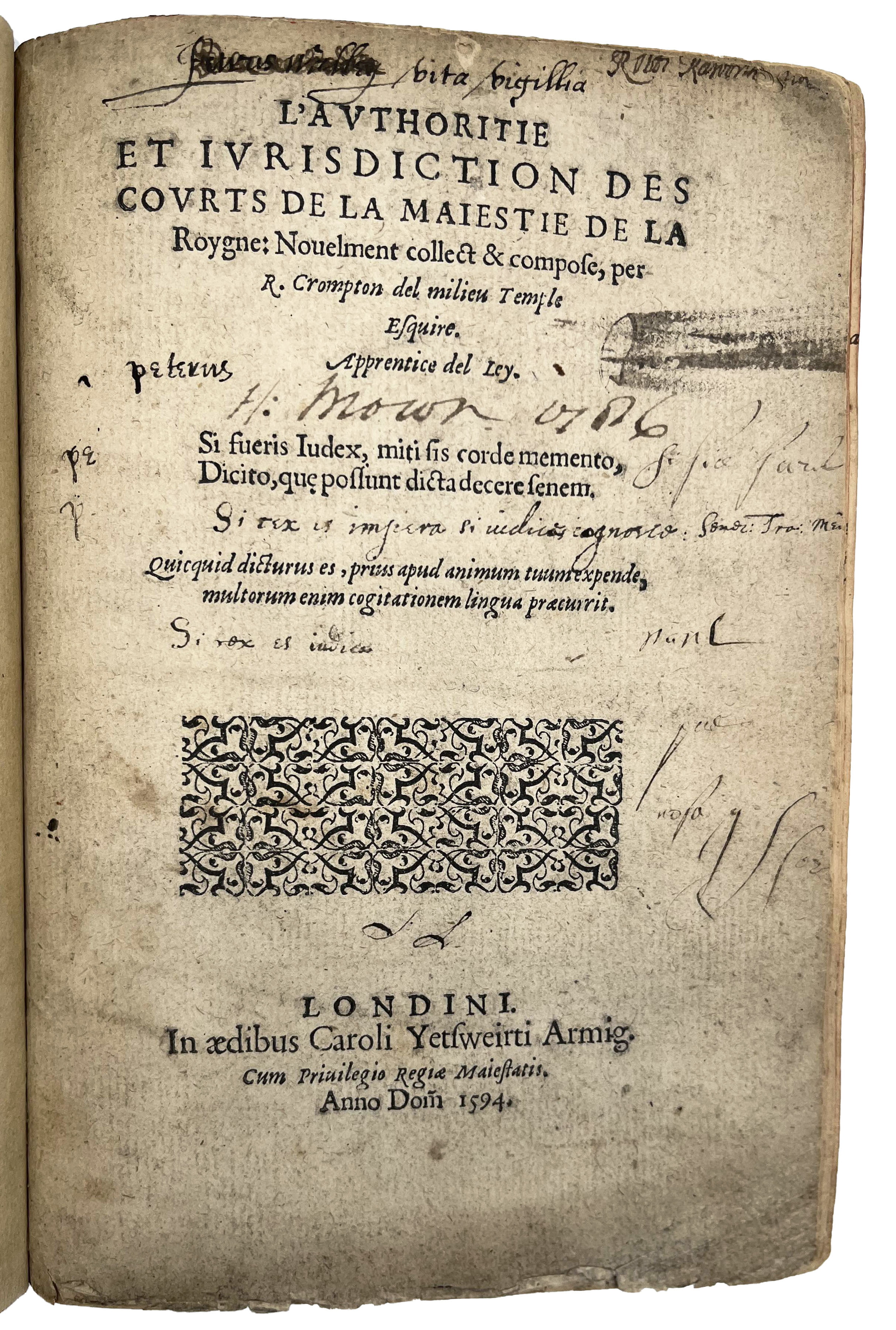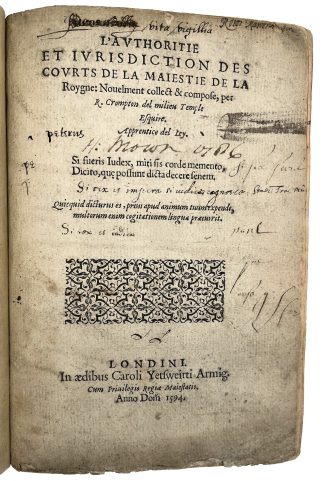CROMPTON, Richard.
L’authoritie et iurisdiction des courts de la Maiestie de la Roygne.
London, Caroli Yetsweirti armig, 1594.£1,250.00
FIRST EDITION 4to. ff [iv], 232: A-B⁴, C-2G⁸, 2H⁴. Black letter, some Roman and Italic. Typographical ornament on title, woodcut initials, typographical headpieces, “Petrus Wally (scratched out) vita vigillia” at head of title with “… Wally owner of this booke” at head of ff. 29 recto, in slightly later hand, another early autograph, holed, at head of title, ‘H. Mowr 1796’ below, contemporary marginal mss. annotations in places. Light age yellowing, a few leaves browned, title dusty, a few marginal spots and stains, the odd small marginal tear. A good copy in early calf with raised bands, rubbed and worn, edges, corners and joints restored, recased, endpapers renewed, a.e.r.
First Edition of Crompton’s important and groundbreaking survey of the Courts in law French. Crompton (1573-1599) was lawyer from a family settled at Bedford Grange in the parish of Leigh, Lancashire, educated at Brasenose College, Oxford. He became a bencher of the Middle Temple and wrote several notable juristic works. He was one of the more important Elizabethan legal thinkers and ‘L’authoritie et Jurisdiction’ was the first book on English law to focus exclusively on the royal courts. The work was a collection of cases mostly taken from other printed sources. At the time of printing it was pretty up to date, including cases from c.1590 (e.g. fo. 34). Divided into 23 sections that focus on a different court, it serves as a guide to the court system. Crompton describes not only the Star Chamber, Chancery, and the court functions of Parliament, but other smaller and less well-known courts. Approaching the Star-Chamber from a strictly legal point of view, Crompton details the statutes which regulated the court and the types of cases that came before it. His sources included the entire gamut of legal publications, including statutes, law reports, and chronicles, sprinkled with his own observations.
The work was part of a plethora of new legal works by the likes of such as Lambarde, Richard Robinson, William West and William Hudson, that focused on explaining the functioning of the courts in Britain. “The sixteenth-century legal humanist movement, by contrast, regarded law historically, as a product of changing human practices or institutions. Accordingly, “humanists were interested mainly in the laws which human societies imposed on themselves – the ius gentium or the ius civile,” rather than in natural law. It is telling that an English legal humanist .. William Lambarde, wrote the seminal treatise on the jurisdiction of English courts in the 1590s: with the decline of the medieval writ system, and the founding of numerous courts in the earlier sixteenth century, there was an explosion of interest in the functioning of courts. This interest in national institutions signals a newfound respect for the positive law of secular jurisdictions “derive[ed] . . . from the Crowne, their originall.”” Andrew Kau. Astraea’s Adversary:The Rivalry Between Law and Literature in Elizabethan England.
As early as 1600, the English legal scholar William Fulbeck praised Crompton’s work. He recommended Crompton’s books to law students because they were both comprehensive and concise, so “that a man may by them in a few hours gain great knowledge”.
ESTC S109077. STC 6050. Beale T328.In stock








